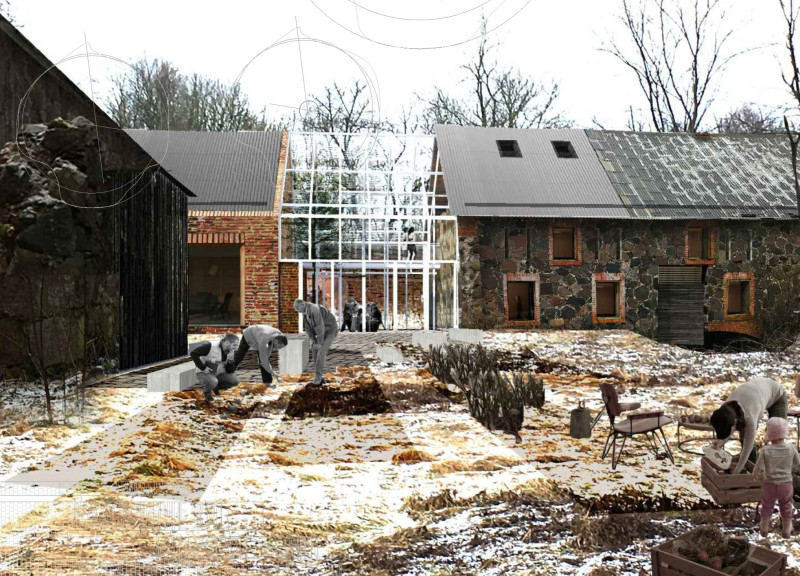5 key facts about this project
The main function of this project is to serve as a residential dwelling, providing private and communal spaces for its occupants. The design reflects a balance between individual privacy and community interaction, facilitating social gatherings while offering retreat areas. The layout is organized into multiple levels, with communal areas like living rooms and kitchens on the ground floor, and private quarters located on upper levels, optimizing the use of space while promoting natural light and views of the exterior.
The design stands out due to its engagement with local context and materials, which contribute to a sense of place. Incorporating elements from traditional Latvian architecture, such as gable roofs and brick facades, the project creates an inviting atmosphere that resonates with its environment. Extensive use of glass helps establish a dialogue between the interiors and the natural surroundings, allowing for a seamless transition from inside to outside.
In addressing sustainability, the project utilizes energy-efficient materials and construction techniques that minimize environmental impact. The brick exteriors provide thermal mass, supporting energy conservation efforts, while wood is employed for structural elements and finishes, contributing to the overall aesthetics of the design. The integration of insulation materials further enhances energy efficiency, aligning with contemporary standards for sustainable architecture.
Another distinguishing aspect of the "At Home" project is its emphasis on biophilic design principles. By prioritizing natural light, views of greenery, and the use of organic materials, the structure promotes well-being and comfort for its occupants. The outdoor spaces are designed to foster interaction with nature, featuring native plants and gathering areas that encourage community engagement.
The architectural plans and sections of the project delineate a comprehensive understanding of spatial flow and organization. The careful consideration of these elements ensures that the design maximizes functionality while adhering to the aesthetic values inherent to the locale.
For more detailed insights into the architectural designs, sections, and ideas that shape the "At Home" project, readers are encouraged to explore the project presentation. Understanding these elements will provide a deeper appreciation for its thoughtful integration with the environment and commitment to sustainability.


























